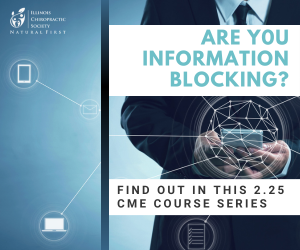
Don’t Be Confused About Medicare

I am always surprised by the amount of misinformation out there when it comes to Medicare and chiropractic care. The truth is that Medicare is not that complicated. The rules are pretty clear-cut on what we can and cannot do. Although they have one of the lowest reimbursement rates, there are still benefits to seeing Medicare patients in your practice. How knowledgeable are you when it comes to seeing Medicare patients?
True or False?
1. Chiropractors can legally opt out of Medicare.
2. By not enrolling in Medicare, you can see Medicare patients, but you do not have to bill Medicare.
3. You can just have every Medicare patient sign the ABN form and treat them as a cash patient.
4. Non-participating providers do not have to bill Medicare.
All four statements are FALSE. Chiropractors do NOT have the ability to opt-out of Medicare. The rules are crystal clear. As a chiropractic physician, you can NOT provide any treatment (covered or uncovered) to a Medicare patient without being enrolled in Medicare. If you choose not to enroll in Medicare, then you must refer Medicare patients to a chiropractor who is enrolled in Medicare. There are no loopholes or secrets to treating Medicare patients and bypassing the rules of Medicare billing. You are either enrolled and submit claims or you are not and do not treat them. The issue is black and white.
The ABN
The ABN, or Advance Beneficiary Notice, is a Medicare document and should not be used with other payers (the ICS has provided a Notification of Non-Coverage form to use with other payers). The ABN is used to notify a Medicare beneficiary when services that have been previously covered, such as the adjustment, will no longer be covered. This form should be signed BEFORE the service is performed.
The ABN should not be used for non-covered services (therapies, x-rays, exams, etc.). The form is good for one year from the date it is signed OR until the patient enters an active episode of care. At that time, the ABN is void and a new ABN would need to be signed once the patient transitions back to maintenance care. Kathy Mills Chang recently posted an article that helps clear up a lot of confusion when it comes to using the ABN in your office.
As of 2018, if you are a non-participating provider, you must strike through the last sentence in the Option 1 paragraph of the ABN that states, “If Medicare does pay, you will refund any payments I made to you, less copays, or deductibles.” When this sentence is stricken, you must include the following CMS-approved unassigned claim statement in the (H) Additional Information section.
“This supplier doesn’t accept payment from Medicare for the item(s) listed in the table above. If I checked Option 1 above, I am responsible for paying the supplier’s charge for the item(s) directly to the supplier. If Medicare does pay, Medicare will pay me the Medicare-approved amount for the item(s), and this payment to me may be less than the supplier’s charge.” For more information on this change, we recommend reading this update from Dr. Mark Sanna.
Participating v Non-Participating Provider
If you make the decision to see Medicare patients and enroll in Medicare, you have the choice to become a PARticipating provider or a NON-PARticipating provider. Participating in Medicare means that you have signed an agreement and accepted assignment on all claims for the year. As a participating provider, you will be paid more money by Medicare. Becoming a non-participating provider means that you did not sign an agreement and can accept assignment on a case-by-case basis. You may collect your Medicare allowable fee schedule upfront from your patient without waiting on reimbursement from Medicare. Both participating and non-participating providers are held to the same standards, rules, and regulations. Your chances of audits or reviews are the same. It really comes down to the amount reimbursed and whether you are paid by Medicare or by the patients themselves.
In 2017, there were 44 MILLION beneficiaries enrolled in the Medicare program. That is over 15% of the population. The number of beneficiaries is expected to rise to 79 MILLION by 2030. Only 1 in 10 beneficiaries relies solely on the Medicare program for health care coverage (AARP Public Policy Institute). Not seeing Medicare patients in your practice can certainly limit your potential patient pool. Don’t let the fear of participating in Medicare hold your practice back. This growing population needs and wants chiropractic care.
To download the Centers for Medicare and Medicaid Services pamphlet, “Misinformation on Chiropractic Services”, click here.

















